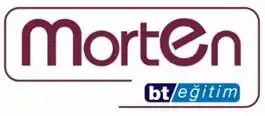Multi-Factor Authentication (MFA)
Multi-Factor Authentication (MFA) is a method of using multiple layers of security to verify the identity of a user. This method requires one or more additional authentication factors in addition to traditional authentication information such as username and password. These factors can be categorised as ‘knowledge’ (password or PIN), ‘ownership’ (mobile device or security token) and ‘biometrics’ (fingerprint or facial recognition). MFA provides an important security measure, especially in protecting access to online accounts and corporate networks, because it offers extra protection where password-only authentication may be weak. This prevents malicious attackers from gaining access to the system by capturing only one factor.
Advantages of Multi-Factor Authentication (MFA) Solution
Advanced Security
MFA goes beyond authentication based only on username and password, it increases security by adding additional verification factors. In this way, even stolen passwords are not enough to take over the account.
Protection Against Identity Theft
MFA prevents identity theft. Since multiple factors (fingerprint, SMS code, biometric data) are required to authenticate users, the account is secured even if only the password is compromised.
Data Protection and Privacy
MFA protects not only the user but also the data of the organisation. Various layers of security prevent the leakage of particularly sensitive data and increase data security.
Compliance and Regulatory Requirements
Many industries, especially in healthcare, finance and government, mandate the use of MFA for user authentication. This solution helps companies ensure legal and regulatory compliance.
User Friendly and Flexible
Modern MFA solutions offer users a variety of verification methods (mobile application, biometric data, hardware key, etc.). This flexibility provides high security without negatively impacting the user experience.
Protection Against Internal and External Threats
MFA not only protects against external attacks, but also against internal threats. Users prove their identity by providing only their own verification factors.






